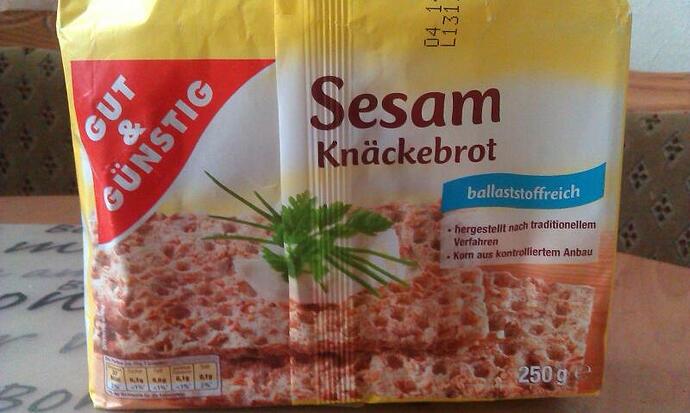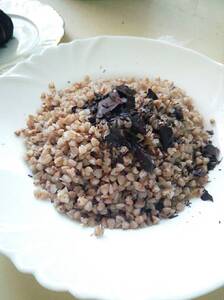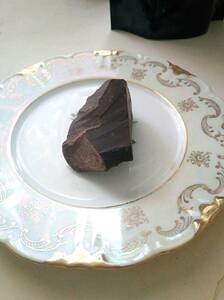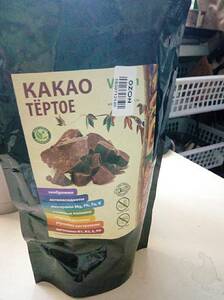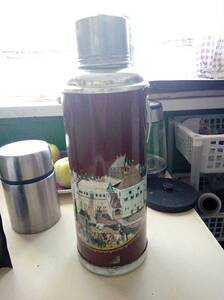Welcome to the @Devtalk cooking and recipes thread! Please feel free to share recipes and/or photos or posts about things you’ve been cooking, which make your life easier and more joyful!
Hello! I am Anatolii. In 2009 I moved to live from Moscow (Russia) to the provincial city of Kaliningrad. From that time on, I no longer went to work in the office, but worked exclusively at home (from home).
In my free time from programming, I like to cook, constantly improving technologies and methodologies, trying to simplify and rationalize my life. I hope that my positive experience will be interesting. I would also like my colleagues to share their findings, life hacks in the field of cooking and healthy eating, so that the life of each of us would become a little better.
My healthy eating regimen was influenced by Yoshinori Ohsumi’s work (autophagy), “The Miracle Morning” book, my military service and my desire to make my life easier.
Breakfast
In the morning I make myself porridge. I start cooking in the evening of the previous day. I make a semi-finished product - I pour boiling water over the porridge (cereal), boil it a little, stirring it, if necessary, and leave it to wait for me until morning. In the morning, the porridge becomes especially tasty and pleasant to look at. I add grated 100% cocoa and a little sugar to it. This is my source of energy for the whole day.
Thanks for posting this thread Anatolii! ![]()
As many of you will know I’m very interested in health and diet and am constantly experimenting with different diets.
Some topics that interest me most are:
- Species appropriate diets (such as what our ancestors would have ate)
- Fermented foods (because of the microbiome is fascinating)
- Bio-hacking and health (because foods can be tools/medicine)
- Practical cooking (while I love cooking I also like my everyday staples to be quick and easy to do)
So if any of you have any tips/recipes/or even just general thoughts on any of the above I will be definitely be interested!
Are you doing OMAD (one meal a day)?
Do you drink Kefir or have any other fermented foods Anatolii? ![]()
No. It is the first one.
From time to time, I drink something like kefir (actually kefir, fermented baked milk, fermented milk drinks with salt, for example “Tan”).
I don’t drink them regularly and don’t think that I need them all the time.
What you need on a regular basis is water and fiber. I still use it regularly.
I really like the bread (a sort of - Roggenvollkorn-Knaeckebrot) made by the German company “EDEKA”
I have come to the conclusion that diets are bad. Nutrition should be balanced. The key to this balance and healing is autophagy, which should be practiced regularly. This is a nutritional method, not a diet. He really does amazing, beneficent things with my body. I am constantly observing it and am very happy with the positive results.
Autophagy is a scientific, conscious approach to nutrition that helps the body cope with everyday (possible) difficulties.
I prefer focus on Practical cooking. They should be rational and maximally useful for the body.
I will share my solutions. ![]()
![]()
Hmm looks interesting (looks a lot more watery than normal Kefir) - what is the process of making it?
A lot of people may disagree with you, and argue that fibre is actually harmful to the gut - particularly in the quantities of most common diets.
People with gut issues are often told to reduce fibre greatly, at least to begin with.
I am undecided. I think fibre could help in certain situations (such as when you need to eradicate a pathogenic microbe or worms) but the jury is probably still out there ![]()
What sort of things? Sounds like a bit of bio-hacking ![]()
I will look forward to seeing your recipes! I am fascinated by how food varies in different countries/cultures etc ![]()
Btw, I’m not sure if you’re aware but you can quote multiple people from different posts (and even different threads) in a single post (saves you having to make multiple posts) ![]()
You are right. Unfortunately, I don’t know exactly the process of making this drink. I can say that he is good at quenching thirst in the heat.
My skin is very sensitive to various kinds of food allergens. When I started practicing this methodology, my skin condition improved significantly. Feeling that your skin does not bother you is happiness.
I’ll tell you tomorrow. ![]() Today there is still a lot that I would like to do (I continue to research the content of Fred Hebert’s book). This is not an easy reading. This book compiles the latest advances in testing and best practices.) I want to understand everything that Fred wanted to say, as well as make the code examples more interesting, both for myself and for everyone who will read this book in the future.
Today there is still a lot that I would like to do (I continue to research the content of Fred Hebert’s book). This is not an easy reading. This book compiles the latest advances in testing and best practices.) I want to understand everything that Fred wanted to say, as well as make the code examples more interesting, both for myself and for everyone who will read this book in the future.
Good books should be treated like a programmer (in pair programming). For me, a book is an interlocutor. It, if written in clear language, enriches me with the wisdom of the author, strengthens my knowledge and makes my own opinion on the subject more substantiated.
Did you pinpoint what was causing your flare-ups?
Awesome ![]()
I haven’t read any of Fred’s books yet but I am definitely looking forward to at some point! ![]()
Good luck with the rest of the book (and your journal!) ![]()
No. Unfortunately, the exact reason is unknown to me.
I want to show what happens if you cook porridge according to my simple recipe. I also want to demonstrate the cocoa liquor that I add to the porridge.
the porridge with sugar
here in such packages I buy grated lump cocoa
Coffee
Coffee I want to share my way of making coffee. I’ve tried a lot of ways. I used different types of machines, cooked it with French presses, Polish style …
I managed to achieve the most pleasant taste results by infusing freshly ground coffee in a thermos - about 10 hours. The taste is saturated and pleasant. This infusion absorbs almost everything that is in the coffee. During these 10 hours I, if possible, gently shake the thermos.
This is what my thermos looks like:
And this is my cup of morning coffee:
@rustkas Why for are you repeatedly tempting me with tasty tasty things that I cannot have while I’m at work? Lol.
I have something to share. 
I hope that when your interesting work, captivating you, absorbing your time, has done, you will still have time and energy to satisfy other kinds of desires - gastronomic ones. @OvermindDL1, I wish you positive and successful culinary creativity!
When I was reading about ‘how to make the best coffee with a French press’, the general consensus seemed to be 4 minutes with water that isn’t too hot, then stir, then a further 4 minutes. How does your version differ in taste? Smoother? Stronger? (I am not a coffee aficionado btw - I avoided it for most of my life but have been experimenting with it recently as Ben Greenfield mentions it a few times in his book) ![]()
I depends on value of water and coffee of course. I like smoother, rich taste. I drink it a little, since I am preparing for several people.
All righty then, here’s an odd one. During the pandemic, I got (back) into making… mead! Yes, that drink that most people associate with Vikings… but was actually around for at least eight thousand years before them, all over Europe… and Asia, Africa, and even Central America!
So how do you make it? I gave someone literally one tweet’s worth of instruction, and when it was done he loved it. So here, slightly (well, okay, very) expanded, is a very basic mead recipe.
Equipment:
-
One clean one-quart jar
-
Something else clean to store it in, like another quart jar or a used wine/liquor bottle
-
One rubber band, that will fit snugly around the mouth of said jar
-
One clean piece of cloth that will cover the mouth of said jar, when secured with the rubber band
Ingredients:
-
12oz honey – whatever kind you like
-
One quart of spring water – well water will do, distilled is not recommended, and chlorinated is bad
-
One quarter-teaspoon bread yeast
Process:
-
Warm the water to about body temperature – don’t get it much above body temp, or you risk killing the yeast
-
Put about half the water in the quart jar
-
Put the honey in the quart jar, using a bit more of the warm water to get the last of it out if needed (like if you’re using a 12oz squeezy-bear)
-
Seal jar
-
Shake jar until honey is well dissolved
-
Open jar, and top off to a quart with more of the water – do whatever you want with the rest of the water
-
Add yeast
-
Reseal jar, shake again for a minute or two
-
Open jar and cover its mouth with cloth and rubber band
-
Store in room-temperature place, away from sunlight
-
Wait for it to start bubbling, anywhere from hours to a day or three
-
Wait for it to stop bubbling, usually anywhere from two weeks to a month
-
Ta-dah, you’ve got mead! BUT, you’ve also got a layer of goop on the bottom. This is mostly yeast (live and dead), harmless but unpleasant.
-
Pour the mead off carefully into something else, trying to get as little of the goop in it as possible.
-
Seal this second container so the mead doesn’t oxidize, but DO NOT SEAL TIGHTLY, as there may still be fermentation going on, which will create pressure, which can burst a tightly sealed container. A used liquor bottle with a cork easily removed by hand should do fine… except it might not all fit, unless you sample some immediately.
 Putting it in the fridge will slow any further fermentation.
Putting it in the fridge will slow any further fermentation. -
Drink it within a couple weeks, because it will oxidize like an opened bottle of wine.
More advanced versions include using flavorings, specific varieties of honey, different kinds of yeast (mostly wine or ale yeast), killing the yeast so you can seal it more tightly, purging the oxygen when bottling for better shelf life, other kinds of more advanced equipment, etc.
This drink is very popular in Russia. Especially in Suzdal.
Honey drinks in Russia - for a thousand years. Initially, honey was made, which, with the addition of berry juice, could ferment by itself and infuse in barrels for several years. Later, in the XVI-XVII centuries, the technology was simplified and they began to add sourdough (and then yeast). Due to which the drink was ready in a month or two. And with the advent of cheap sugar in the late 19th - early 20th centuries, they began to generously pour it into honey wort. It was then that the term “mead” appeared.
More info.

